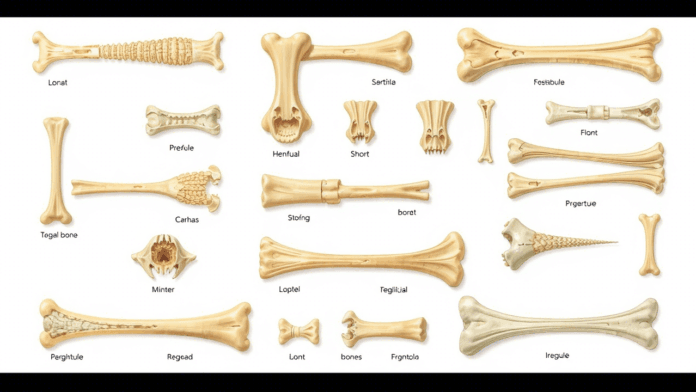Human skeletons are a collection of many structures to support movement and overall body function. This system has an important part, which are the types of bone. Each of these types of bone has its particular role in helping to maintain health. Besides just being passive supports, bones are active participants in our physiology.
They have a role in the storage of essential minerals and the synthesis of blood cells. It is divided into five major types according to shape. Bones possess chemistry that helps explain how the skeleton supports bodily processes.
Here are some best blogs which you can read also: Pain Management in Right Side of Stomach | Calories in an Apple | High Pretein Foods | Period Pain Relief
Long bones and movement support
The ones attached in the arm and legs are just force are a very vital part of potency as well as mobility. Despite being significantly longer than wide, the tissue is largely compact. They are important for generating force and are levers during motion.
Their bones are made up of a central shaft that is connected to the ends via joints with other bones. Weight dependent on this shape distributes and resists bending forces during physical activity. Both red and white blood cells can be produced in the house marrow. As a result, they are necessary for both blood cell formation and mobility. It is the bone type most commonly linked with movement.
Short bones and stability
The design supports them with little movement while maintaining strong and stable support. Another way it allows slight movement in different directions helps with balancing and agility. The main purpose of its contamination is to disperse force and absorb impact.
Short bones are best suited for regions under force from many directions. The tarsal in the foot and the carpals in the hands are points that could be pointed at. Working in groups, these bones usually allow coordinated but flexible movement.
In joint-heavy areas, short bones provide vital structural support to many kinds of bones. Control in more productive motor activities and a small gesture rests on them.
Flat bones and organ protection
It helps muscles to attach and protects main organs from physical damage. Surrounded by a spongy center abundant in bone marrow, flat bones have two layers of compact bone around them. This organization aids in absorbing impact and stops major injury to internal organs.
It also helps their marrow produce blood cells. Considering the kinds of bone, flat bones are vital for the maintenance of body integrity and physical security. Their structure allows maximum surface area for muscle fastening and internal support.
Irregular bones and structural support
It has intricate forms that fall outside of other bones. The unique shapes of the bones serve certain purposes throughout the body. Among other examples, the vertebra protect the spinal column under such a body position as do the vertebrae bear the body back and forth.
Pelvis is another odd bone supporting abdominal organs and helping in reproduction. They provide muscle attachment, spirit way, and organ protection in hard to reach spaces. For strength and resilience, these bones are made of thick and soft materials that join.
Among the most adaptable in function in the category of bone types are irregular bones. Their complexity shows the many activities they can carry out.
Bone remodeling and growth
The rate and level of remodeling are affected by hormones including growth hormone and calcitonin. In early adulthood as well as adolescence, bone renovation is absolutely vital for normal growth. In grownups, it assists in preserving strength and avoiding wear and breaks. Remodeling capacities are found in every types of bone.
Sustaining performance and resilience across life depends in part on this flexibility. Here are some best blogs which you can read also: Chia Seeds Benefits | Skin Care Routine | Oats Benefits





